Reception Haymlich. Method Heimlich: description of the reception.
Accepting Heimlich is an emergency method used to remove foreign objects in the airways. Reception of Heimlich is used in cases where a person cannot breathe as a result of contact with such objects in the respiratory tract. Oxygen starvation from a foreign body with airway obstruction can lead to irreversible brain damage or death within four minutes or less. Taking Heimlich can save the life of the victim of suffocation.
When heimlich is taken
This first aid method does not work on children under one year of age. Indications for its use in blocking the respiratory tract include the following:
- inability to cough or talk
- blue or purple complexion due to lack of oxygen
- weak cough and shortness of breath,
- all of the above described with subsequent loss of consciousness.
Choking statistics
Every year, a huge number of people, among whom tens of thousands of infants and older children get into the emergency departments of hospitals with incidents. More than 80 percent of them are children ages four and under. Death from airway obstruction and related injuries is especially common in children as young as four because of their anatomy (small airways), natural curiosity, the tendency to stick objects in their mouths, and undeveloped chewing skills. In young children, asphyxiation usually occurs as a result of inhaling small objects (such as coins or small toys and their parts) that they pull into their mouths.
How did the Heimlich technique come about?
 In 1974, Henry Heimlich first described the technique of pushing out foreign material that blocks the trachea. This method, which is now called Heimlich's technique, is simple enough and can be performed by any trained person. Reception of Heimlich is a standard part of first aid at rescue workers and in courses for the training of cardiopulmonary resuscitation. The theory of the technique of performing the game of Heimlich is based on the fact that during the compression of the abdomen below the level of the diaphragm with the performance of rapid abdominal thrusts, an “artificial cough” is caused. The air is pushed out of the lungs and knocks an obstruction (foreign object) from the trachea into the mouth. Heimlich can be taken on all people; However, there are certain moments when performing it in infants, children, obese people and pregnant women.
In 1974, Henry Heimlich first described the technique of pushing out foreign material that blocks the trachea. This method, which is now called Heimlich's technique, is simple enough and can be performed by any trained person. Reception of Heimlich is a standard part of first aid at rescue workers and in courses for the training of cardiopulmonary resuscitation. The theory of the technique of performing the game of Heimlich is based on the fact that during the compression of the abdomen below the level of the diaphragm with the performance of rapid abdominal thrusts, an “artificial cough” is caused. The air is pushed out of the lungs and knocks an obstruction (foreign object) from the trachea into the mouth. Heimlich can be taken on all people; However, there are certain moments when performing it in infants, children, obese people and pregnant women.
Proper execution of the reception Heimlich
In order to perform the game Heimlich, you must go behind the victim, who can sit or stand. A caregiver gets a hand clenched into a fist on one side and places it with his thumb towards the victim below the chest and above the waist. He then grabs the waist with his other hand, putting it on top of his fist, and performs a series of five quick tangible inwards and upwards jolts. If the object does not move, the cycle of five pushes is repeated until the object is pushed out. As the victim is deprived of oxygen, the muscles of his trachea relax, and it is possible that a foreign object can be pushed out on the second or third attempt.
If the victim is unconscious
If the victim is unconscious or loses consciousness, the person providing first aid should put him on the floor, bend his chin forward, making sure that the tongue does not block the airways, trying not to press them, put his hands between the lower part of the chest bone and abdomen the victim in the area of the navel and perform a series of five quick pressing-pressing inwards and upwards. After abdominal jolts, the rescuer repeats the process of lifting the chin, moving the tongue, groping and, if possible, removing a foreign object from the mouth. If the airways are not cleared, a series of abdominal jolts should be repeated as often as necessary. If a foreign object has been removed, but the victim is not breathing, artificial respiration should be started.
Heimlich welcome for children and stout people
The technique of performing the game of Heimlich in children older than one year is, in principle, the same as in adults, except that the amount of force used must be less in order to avoid damage to the ribs, sternum and internal organs of the person saved.
 The main difference in the performance of Heimlich's reception in obese people is in the placement of the fists. Instead of using abdominal thrusts, emphasis is placed on the chest. In this case, the fists are located against the middle of the sternum, and the direction of the impulse towards the rib cage goes down, not up. If the victim is unconscious, the blows to the chest resemble a technique attached to. In the same way, Heimlich is taken on pregnant women with a bulging belly.
The main difference in the performance of Heimlich's reception in obese people is in the placement of the fists. Instead of using abdominal thrusts, emphasis is placed on the chest. In this case, the fists are located against the middle of the sternum, and the direction of the impulse towards the rib cage goes down, not up. If the victim is unconscious, the blows to the chest resemble a technique attached to. In the same way, Heimlich is taken on pregnant women with a bulging belly.
Performing the game of Heimlich in babies
Admission Heimlich, as described above, is not performed on children under the age of one year. Instead, a series of kickbacks and pushes to the chest are used. The first aid person sits down and puts the baby face down on his hip, supporting the child with one hand and the other with five quick strikes on his back between the shoulder blades. After carrying out a series of backstrokes, the child is turned face up, supporting it with a hand. Using the free hand, her index finger and middle finger are placed in the center of the sternum and make five quick pushes and continue until the trachea of the child is released. If the child loses consciousness, it is necessary to begin cardiopulmonary resuscitation.
Welcome to Heimlich: how to help yourself
![]() There are situations when a choking person is alone, or the others are confused and do not know what to do. In this case, you can (and should) help yourself. For this fist clenched hand with the side where the thumb is, put on the stomach between the navel and costal arcs. Place the palm of the other hand over the fist and with a quick push upward, press the fist into the stomach. Repeat pushes several times until the airway is clear.
There are situations when a choking person is alone, or the others are confused and do not know what to do. In this case, you can (and should) help yourself. For this fist clenched hand with the side where the thumb is, put on the stomach between the navel and costal arcs. Place the palm of the other hand over the fist and with a quick push upward, press the fist into the stomach. Repeat pushes several times until the airway is clear.
Instead of a fist, you can use any horizontal object, for example, a back of a chair or chair, a table edge, etc. Lean on it and push it upwards in the epigastric region.
Precautions when performing reception Heimlich
Anyone can be trained to perform the game of Heimlich. Before performing it, it is important to determine whether the airways are blocked completely. If the suffocation victim can speak or cry, Heimlich's reception should not be carried out. If the airway is not completely blocked, the victim should try to cough to remove a foreign object. Vomiting may occur when performing a game of Heimlich. All infants and children after its use should be taken to hospital and checked for damage to the respiratory tract.
Risks and consequences
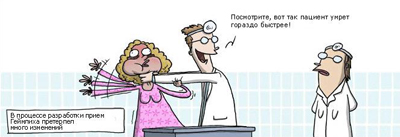 Incorrectly applied Heimlich technique can break bones or damage internal organs. The person performing it must never attempt to reach the stuck object with his hands. This will probably push it further down the trachea. After taking Heimlich, dysphagia (difficulty swallowing) and obstructive pulmonary edema (fluid accumulation in the lungs) can occur.
Incorrectly applied Heimlich technique can break bones or damage internal organs. The person performing it must never attempt to reach the stuck object with his hands. This will probably push it further down the trachea. After taking Heimlich, dysphagia (difficulty swallowing) and obstructive pulmonary edema (fluid accumulation in the lungs) can occur.
In many cases, after removing a foreign object using Heimlich's technique from the throat, the victim does not experience any permanent effects. If the foreign object is not removed on time, irreversible brain damage from oxygen deficiency and death can occur.
Choking prevention
Since most cases of choking occur in the home, the parents of the child must be trained in the game of Heimlich. The chance of choking can be reduced by close supervision of children. Most choking cases are related to food items, especially candy, grapes, nuts, popcorn and carrots. Hazardous items include deflated balloons, buttons, coins, small balloons, small toys, small parts of toys.
Article author: Valery Viktorov, “Moscow Medicine Portal” ©
Denial of responsibility: The information presented in this article about how Heimlich's intake is correctly performed is intended only to inform the reader. It cannot be a substitute for advice from a professional medical professional.
Hello, friends and guests of my male blog. Ask yourself a simple question: “What if a child chokes?”. Test yourself. How much knowledge do you have enough to save the life of your baby? But many fathers and mothers have no idea what to do when a critical situation arises.

Fear for the lives of their children - parental fear. In a real situation, when the child suffocates, the face turns red, the parents start to panic, fuss and make unnecessary movements. It is when need to act quickly and calmly.
Calm and confidence give elementary knowledge of first aid and control of the situation. This is how a man should be: calm, confident, support.
Why is it important to know the case of life
Frankly, I'm a young dad. My beloved daughter Polina is now 2 years old. And I once had a situation when my child choked:
We had family dinner at the table in the kitchen. Daughter swallowed a large piece of cookies, not chewing it. The daughter did not even cough, just her face turned red, and her convulsive movements began. My wife started to panic: she started knocking her daughter on the back, shaking her, screaming. I just at the moment all the emotions turned off, I got up and quickly did everything right, confidently and calmly.
You do not need to have a rocket scientist to understand that the ambulance will not have time to arrive, and therefore you need to know -\u003e
How to give first aid if the child choked
It is important to know:
If the child coughs off, no need to beat him on the back. Coughing up is the body's natural and very effective ability to get rid of all the outsider that has got into the airways. If the baby is coughing, leave him alone, let him cough, and everything will be fine.
How to understand that a child is choking (symptoms)
The baby’s face has become purple, he cannot breathe, his eyes are wide open, scared, makes no sounds, convulsive movements of his hands and body.
First aid:
First you need to clear the airway. Lay the baby on the hand face down (legs hang on both sides) and gently, but knock hard enough between the shoulder blades. As a rule, this is enough for a stuck piece of food to jump out. 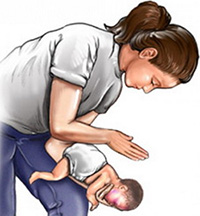
Heimlich method
For older children (from 1 year old) and adults, the so-called Heimlich method. it the most effective way to clear the airways from foreign objects. First of all, you need to be placed behind the victim, press your whole body against him, between the navel and costal arches, position the fist with the side where the thumb is, cover the fist with the palm of the other hand, then perform sharp jolts towards you and upwards. Repeat until airway clears. As a rule, a pair of jerks is enough.
After providing first aid by the Heimlich method to a child or adult, it is advisable to see a doctor, since possible damage to internal organs.
If after removing the item child's breathing and heartbeat is missing, urgently need artificial respiration and an indirect heart massage. But I hope this does not come to that.
Artificial respiration and indirect heart massage is the subject of a separate article, so here I will not touch it.
A child is the happiness, joy and hopes of loving parents. Children learn about the world, so they are arranged. 🙂 Out of curiosity, they drag everything into their hands into their mouths. And this is a serious danger to choke. Now that you know what to do, if the child is choked, you will feel calmer and more confident. All the best to you and be happy! 🙂
Man is mortal. And mortal, unfortunately, suddenly. Cars, household appliances, unscrupulous builders, hooligans and Islamic fundamentalists are ready to break the thin thread of our life at any moment. The higher nature has arranged us so that we risk our lives, even when we are engaged in the most ordinary business - we take food. The fact is that the human oropharynx participates simultaneously in the act of breathing and in the act of swallowing (html # comments). The ingestion reflex protects us from hitting the food lump in the airways. When it, the lump, touches the back of the pharynx and the root of the tongue, the pharyngeal muscles reflexively contract, the epiglottis close the entrance to the trachea, and the soft palate blocks the entrance to the nasal cavity and the food lump moves into the esophagus.
The swallowing reflex separates breathing and swallowing. It is impossible to inhale and swallow at the same time.
But in some situations, the reflex does not work: - in children, the reflex is not yet fully formed - in older people, the reflex begins to fade - in drunk people, all reflexes are inhibited and muscle tone decreases due to the specific effect of alcohol on the nervous system. (That is why fasting is especially relevant now, before the New Year holidays and corporate parties, when alcoholic libations are combined with excessive food intake) - chronic irritation of the mucous membrane of the oropharynx in smokers, people with chronic inflammatory diseases of this area can also lead to the extinction of the swallowing reflex. - diseases of the nervous system and abnormalities of the upper respiratory tract
If the food bolus is a bolus or a foreign object gets into the respiratory tract, the situation may develop in two scenarios - incomplete closure of the respiratory tract (the person is intensely coughing, can say short phrases) - complete closure of the respiratory tract (the person suffocates, turns blue, instead of breathing a whistling sound is heard may say cough is absent or weak)
In case of incomplete closure of the respiratory tract, ask the person to take a deep slow breath and straighten up, and then a sharp exhalation with an inclination forward. Suggest the person to cough. No need to "peel" him on the back, especially if he is standing up straight - you will push a bolus even further into the airways. Patting on the back can only be effective if the person is bent over.
With the complete closure of the respiratory tract (the person is blue and breathes, clings to the throat or makes vigorous pantomime with signs, does not answer questions) need to perform the Heimlich technique (Heimlich maneuver, Hyimlich allowance). It is necessary to go behind the person, slightly sit down, tilt his body slightly forward. Then you need to clasp it behind your hands, putting a clenched fist on the abdominal wall exactly under the place where the sternum ends and the last ribs join it. In the middle between the top of the angle formed by the ribs and the sternum and navel. This area is called epigastric.
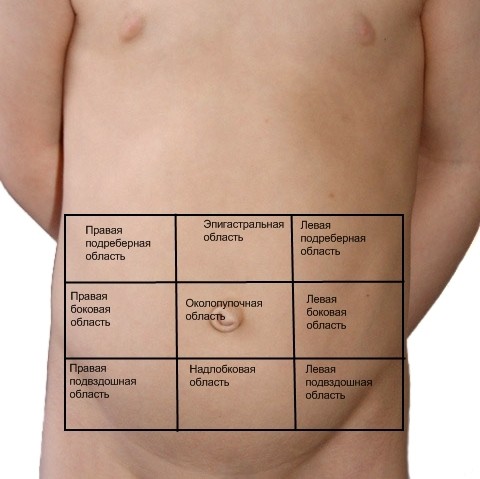
The second hand must be put on top of the first. A sharp movement, bending the arms in the elbows, it is necessary to press on this area, without squeezing the chest. The direction of the jogging movement is towards itself and upwards.

If the incident occurred with a very full person or pregnant, and there is no possibility of placing a fist on the stomach, you can put a fist on the lower third of the sternum.
Heimlich peeped this reception from our younger brothers. Many animals use this technique for mutual aid.
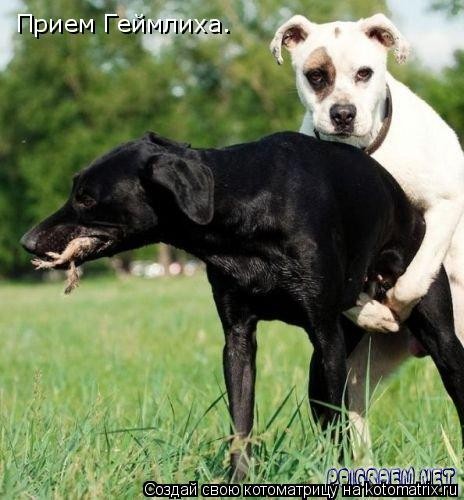
Pressing the abdominal wall will drastically increase the pressure in the chest, and the food bolus will release the airway. I repeat once more that the reception of Heimlich is effective only with complete obstruction of the airways. When incomplete, the most effective way is to cough.
If it is not possible to immediately release the airways, then repeat the game of Heimlich 5 more times.
In case a person fainted, lay him on his back, on a flat, firm surface. Sharply press your hands on the epigastrium (where it is - see above) in the direction of the back-head (back and up).
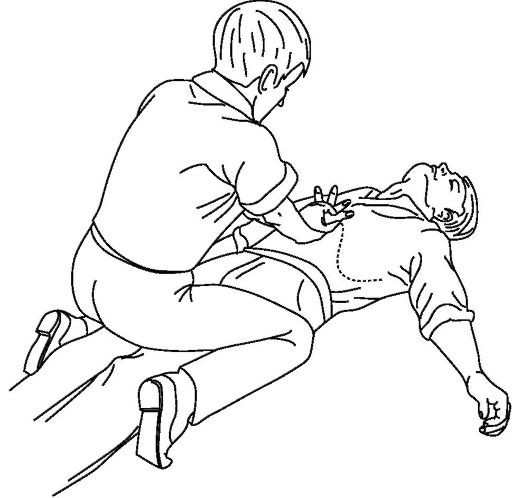
If after five pushes the airway was not released, call 112 and start cardiopulmonary resuscitation using the CAB protocol http: // site / 9291 3.html # comments
If you have choked, and there is no one nearby who could help you, help yourself. Spend yourself receiving Heimlich yourself. To do this, put yourself a fist on the epigastric region, with your thumb towards you. Cover the fist with the palm of the other hand and push the epigastric area with a sharp movement, directing the jogging movement towards you and upwards. The second way is to lean on the back of the chair in the same area and, due to the weight of the body, to make sudden jogging movements in the same direction until you reach the airway.
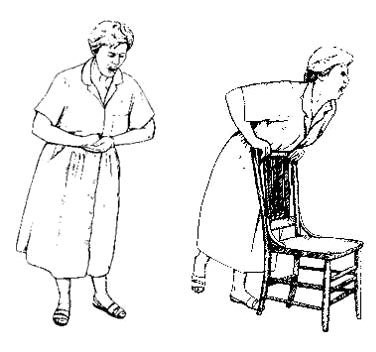
It is necessary to seek qualified medical assistance even with a favorable outcome of the maneuver to avoid damage to internal organs.
In order to remove a foreign body from the mouth of a choking infant, place it face down in your palm. The body of the child lies on the forearm, the child’s head is tilted down. Produce a few pats between the shoulder blades of the child until the contents of his throat are in your palm.
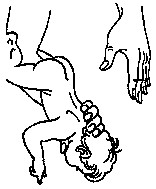
If it is impossible to get the foreign body in this way, then place the child on a hard surface and sharply press the fingers on the baby’s epigastric region in the same direction (up and backwards).

With the ineffectiveness of the activities start.
UPD: American Red Cross (from 2011) recommends the following sequence in case a person (child) choked and cannot speak, cough or breathe:
1. Call an ambulance
2. Apply five blows to the upper back, tentatively bending the person forward.
3. To make 5 receptions of Heimlich (in the case of a child, see the picture)
4. Repeat the cycle of strokes and abdominal thrusts, and if a person has lost consciousness, start.
(2 votes: 5 out of 5)Many of us faced a frightening situation: a child or an adult choked with something. Usually, everything “costs”, but in some cases, if the airway is blocked completely, a person’s life is at risk. In this case, the countdown goes on for minutes - people nearby should be ready to help the victim and thereby save his life.
There is the so-called Heimlich technique (in another interpretation, Heimlich), the use of which in everyday life helps to clear the airways and save a person from death from suffocation.
It is necessary to know. Reception, able to save lives. Different objects get stuck in people's throats much more often than you can imagine: food, bone, or anything else can get stuck in the airways and thereby quietly suffocate a person. As with a very simple technique, you can save a life when something is stuck in your throat:
Partial blockage. If the victim makes sounds or coughs, this is very good. This means that its airways are not completely blocked. Cough is a protective reaction of the body, aimed at getting rid of leftover food or other objects stuck in the throat. Ask the victim to continue to cough until you see the object stuck, and then pull it out with your thumb and index finger.
Even if the object does not completely block the airway, you need to be alert that it does not close them completely. If the victim is a child under one year of age, remember that when he cries and coughs, this is a good sign.
Complete blockage. The victim does not make any sounds, but is conscious. He cannot even cough, since the object completely blocks his airway. In this case, you must resort to the reception Heimlich.
2. Admission Heimlich (for adults and children older than a year)
Remember: the game of Heimlich should be used only if the victim is over a year old and cannot cough, speak, shout and, accordingly, breathe. If he is not given prompt assistance, he will faint. In such a situation it is very important to act quickly, while maintaining calm. There is nothing difficult in accepting Heimlich:
Stand behind the victim if you are right handed - a little to the left, if left handed - a little to the right.
Take it firmly under the breast and tilt it slightly forward so that the object stuck in the throat moves outwards, not deeper inwards.
Gently but confidently hit the victim between the shoulder blades of the upper part of the wrist.
Check if the object is out. If not, strike again, and so on up to five times.
If there is no result from the blows and the victim is still unable to breathe, make a fist and place it between his navel and the ribs. Place your other hand on top and press it several times until the stuck object comes out. Please note that this technique cannot be done with pregnant women, children under one year old and people with excess weight.
If the object still interferes with breathing, call an ambulance. Do not leave the victim alone and continue to apply Heimlich's technique until the doctors arrive.
3. Children under the age of one.
If the child does not cough or cry, place him mouth down along his forearm or thigh so that his head is, what to lean on.
Gently strike him five times on the back with the upper part of the wrist. After that, carefully examine the child’s mouth and remove the object if you see it there. Do not try to reach the stuck object by putting your fingers into the child’s mouth, as this way you can push it deeper and thus only worsen the situation.
If this does not help, turn the child on his back and gently push his chest five times. After each attempt, check whether the stuck object has come out.
As you can see, in this technique there is nothing difficult, you just need to be calm and confident in yourself. Reception of Heimlich helps in most cases, and it is necessary to always remember him in order to be able to save a life.
Gagged needs immediate help. Usually, the victim has a bluish-red (cyanotic) complexion, most often holds his hands by the throat and cannot speak and / or breathe.
Procedure for assisting a choked person (victim in consciousness):
- Squeeze one hand into a fist, and with the side where the thumb is, put it on the victim's stomach at the level between the navel and costal arches (in the so-called epigastric abdomen)
- The palm of the other hand is placed on top of the fist. With a quick push up, the fist is pressed into the stomach. At the same time, arms should be sharply bent in the elbows, but the victim’s chest should not be squeezed
If necessary, repeat the technique several times until the airway is clear.
Do not slam the victim on the back - this can only worsen his condition!
Procedure for helping a choked person (unconscious victim):
- Put the victim on his back
- Sit astride the hips of the victim, face to the head. Putting one hand on the other, place the base of the palm of the lower hand between the navel and costal arches (in the epigastric abdomen)
- Using the weight of your body, vigorously push the victim's abdomen in an upward direction towards the diaphragm. Repeat several times until the airway is clear.
If the victim does not come to his senses, start CPR (according to the algorithm). The victim must be examined by a doctor, even with a favorable outcome.
Accepting Heimlich when baking in children
Swallowed cannot speak and / or breathe and needs immediate help.
The procedure for assisting a choked child:
- Lay the child on his back on a hard surface and kneel in his legs, or keep him on his knees, face away.
- Place the middle and index fingers of both hands on the baby’s belly on a level between the navel and costal arches
- Vigorously press on the epigastric region in the upward direction to the diaphragm, without squeezing the chest.
Be very careful! Repeat the above steps until the airway is clear.


